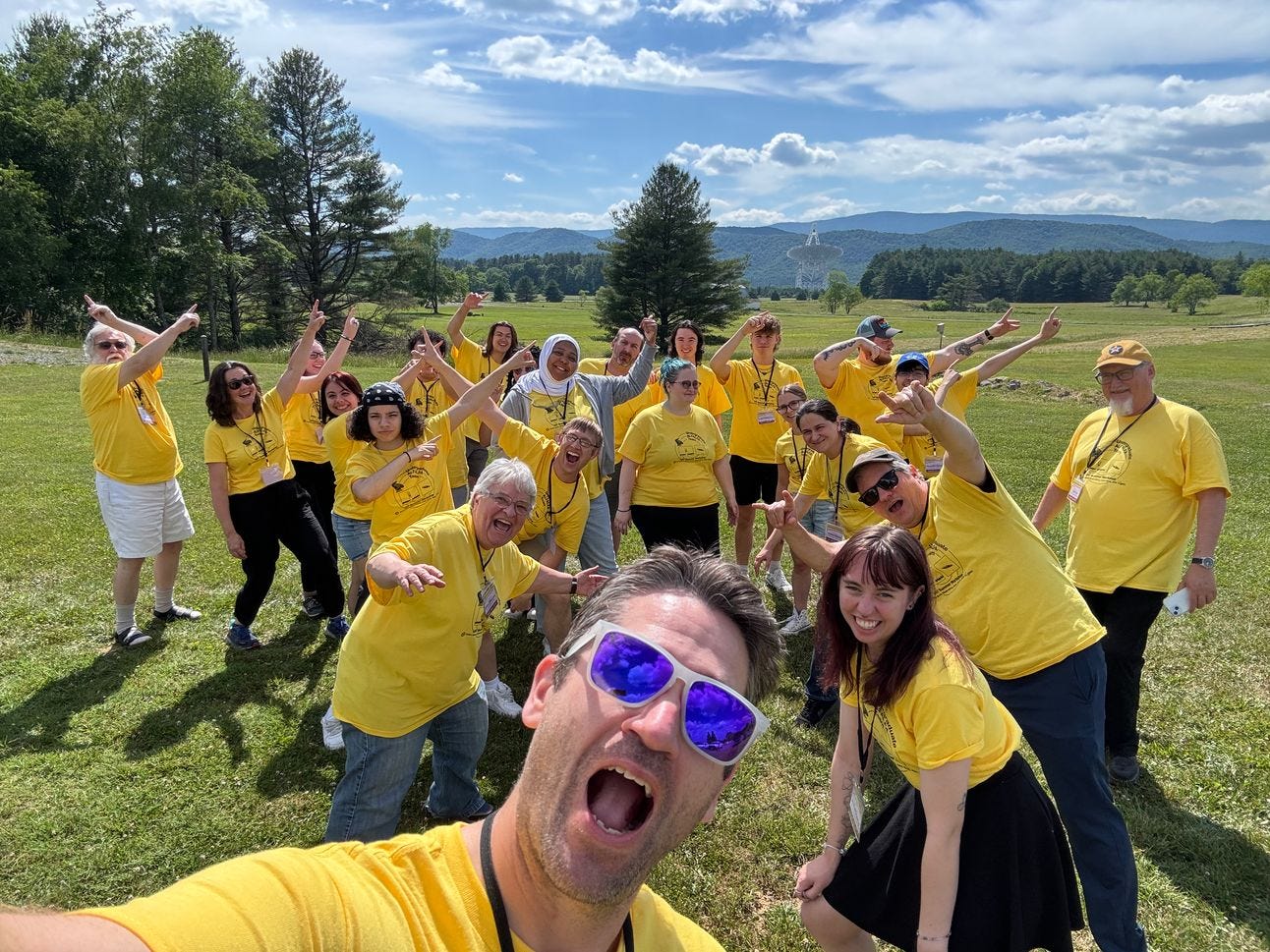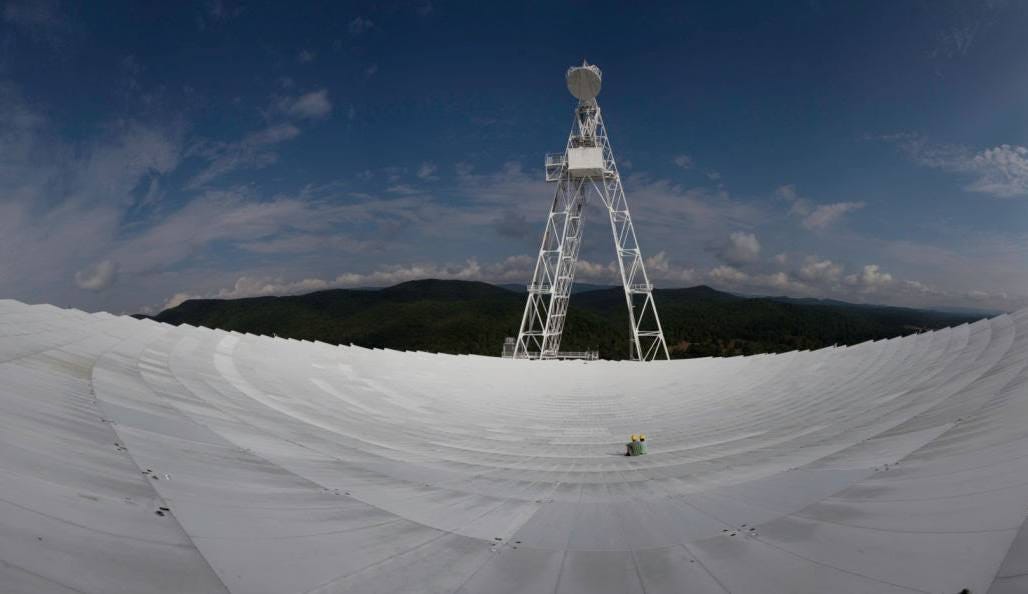
Author’s note: I’ve recently returned from a trip to Green Bank Observatory, so for this week I wanted to share a reflection on the awesomeness of the largest fully steerable telescope in the world! (Note on the note: I also shared this with my Astro After Dark Chicago newsletter, so if you subscribe to both, my apologies).
This past week I’ve been helping facilitate a workshop at the Green Bank Observatory, which has felt like a bit of a homecoming, since I haven’t been to the site since 2019 (need I say, a lot has happened since then?). As I reflect on the time, I can’t help but share just a few totally awesome facts about this place:

Located in the rolling mountains of eastern West Virginia, the Green Bank Observatory is both beautiful and impressive. Home to several mammoth telescopes, at the center of the observatory is the largest fully steerable telescope in the world, cleverly called the Green Bank Telescope (or the GBT). It’s an awe-inspiring structure. More than 150 feet taller than the Statue of Liberty, it stands 35 stories high, and can fit two football fields side by side on its dish. It weights nearly 17 million pounds, yet it’s so well balanced, an engineer told me once, you could move it with your hands.

This telescope is crazy sensitive. Your cell phone in airplane mode on Mars would be much brighter than many of the sources this telescope detects. Indeed, cell phones and other terrestrial signals are some of the greatest threats to the science done here. No electronic devices are allowed within a mile of the observatory, and no wifi, cell phones, or other transmitting devices within 10 miles. In fact, the telescope is located in the middle of a 13,000 square mile national radio quiet zone, where any installed transmitters or towers need operate at low power and be pointed away from the observatory.
I struggle to take in the amount of thinking that goes into designing and operating an instrument like this. The telescope spins on what are essentially giant train wheels, but cut in a slanted shape so the telescope naturally turns as they roll. Even the thousands of two foot, twenty pound bolts that hold the track in place were re-engineered 3 times, and are bolted in using a special device that lifts the threading up as it tightens to maximize the tension. An entire room part way up the telescope is filled with electronics that control the 2,209 individually moved actuators which reshape the dish to counter the ways it deforms when it moves, or as the temperature changes, or as it is buffeted by the wind (and that room itself is a carefully engineered giant metal box that keeps all the potential radiation inside).

Incredibly weak signals from space (so small that the total power from all the radio radiation ever detected from space is less than it takes to flip a piece of paper) are gathered by the giant dish, redirecting the signal to a smaller secondary dish, and then into the receivers, which are vacuum sealed and cooled to below -420 degrees F. The signal is amplified and sent via coaxial cable to the control room where it is digitized and processed by racks of powerful computers, all contained within a large metal cage so none of the radiation from their electronics gets out.
And what’s the result of all this? We can detect tiny signals from hydrogen atoms undergoing the weakest of quantum transitions. We detect tiny pulses from the rapidly spinning cores of dead stars, which, when combined together, give us hints about tiny warps in space time due to the merging of supermassive black holes. We see the emission from tiny dust particles forming new stars and solar systems, and can determine the exact spin and rotation of nearby asteroids. Our eyes are opened to a whole invisible universe — a place of wonder.
It’s easy to forget the wonder of the things we encounter on a regular basis. I’ve visited and observed with the Green Bank Telescope numerous times. Yet today I return home again with a renewed sense of awe.







Great article Luke! I always had a passion for Radio Astronomy in college. My senior project with 2 other people was building a small radio telescope and "Comparing An Experimental Determination of the Sun's Kinetic Temperature At 144 Megacycles/Sec with Theoretical Predictions". Also, nice pun in your opening "Author's Note" indicating you wanting to "Share a reflection" regarding this telescope with all of your readers.